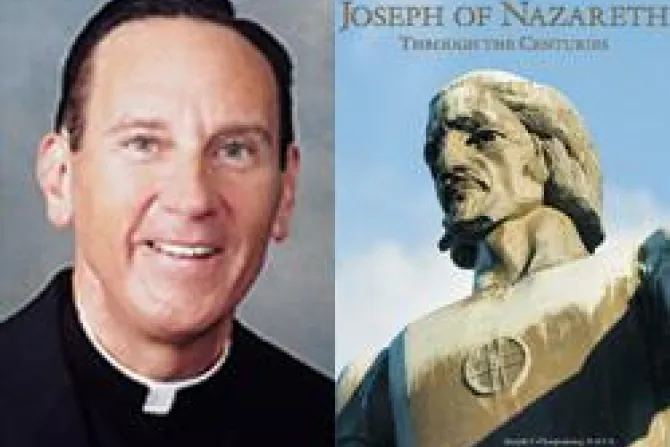“Her journey, of course, extends beyond Joseph's, since it's assumed he died before Christ's public life. But they were united, in the mystery of the Incarnation, in this common pilgrimage.”
Both Mary and Joseph, in different circumstances, encountered angels who described the mystery of God's arrival among mankind. But both saints, Fr. Chorpenning observed, needed years of life experience to deepen their understanding of what they believed by faith.
“Both of them were the recipients of an angelic annunciation which revealed the mystery to them. But to say that the mystery is revealed, does not mean that they totally comprehended it.”
“Mary may have apprehended the mystery more fully than Joseph. But the fact was, the two of them – after having lived in the closest possible human contact that any human persons ever lived, or ever would live, with the person of Jesus – still did not fully understand the mystery of his being.”
In later centuries, Christians became well-accustomed to the truth of what the angel told Joseph – about the child conceived by the Holy Spirit, who would “save his people from their sins.”
But for the first man to hear the message, it was far from traditional.
“What he's being told, in that annunciation, goes against everything that he's being told by the culture,” said Fr. Chorpenning.
“First of all, they were both probably relatively young. Joseph – as a devout Jew – would have expected to marry, and to have many children. A man's identity was defined by his family.”
“He's being told: 'You're going to give that up. You are to take Mary into your home; you are to surrender yourself, with all that involves, to taking Mary into your home and acting as a father to the child she is going to bear, even though you did not biologically generate him.'”
“Once the angelic annunciation takes place, we really don't get a sense of what's going on in Joseph – except that Matthew says, after the angel left, Joseph got up and did immediately what the angel said.”
“Now of course, that's a very brief way of saying it. I'm sure it took everything that was within him to do it.”
(Story continues below)
Subscribe to our daily newsletter
After 20 years of research, Fr. Chorpenning still speaks with amazement about the humble man who served as a father to God.
“I mean, this was a carpenter from Palestine! And you see the pictures and the paintings, where he's sitting on a throne with a crown holding the Christ child – I say to people, 'Well, we certainly have come a long way from Nazareth.'”
“Obviously, there is a theological meaning to those images. But I think what we need to emphasize to people, is that Joseph and Mary were people who responded to what God was asking of them, as it was being revealed to them, in the circumstances of their daily life.”
“They are not just these untouchable figures up there, 'floating in the clouds' of the Church Triumphant. In their time, and in their day, they were people just like we are.”
“Did they feel it was beyond them? Absolutely. Who wouldn't?”
Fr. Chorpenning said St. Joseph not only displays the virtue of faith, but also illustrates what Bl. John Paul II meant when he spoke of the “civilization of love.”



